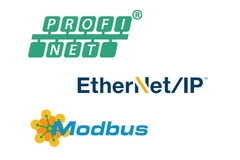Ethernet-APL: Frequently asked questions
Learn more here!
Ethernet-APL is a new technology that goes beyond the control level and the field level; it can change the complete infrastructure of a process plant. Let’s answer the questions most people ask when considering Ethernet-APL.
Benefits
Find frequently asked questions.
Read the answers.
Get more insights.
Ethernet-APL: Question 1
What components are required to set-up an Ethernet-APL network?
PLC/DCS: Many common systems can already operate with industrial Ethernet protocols such as PROFINET.
APL Switches: Depending on the plant’s requirements and network topology, you may need APL field switches, APL power switches or both to connect to the field.
APL Field Devices: You’ll need sensors and actuators with Ethernet-APL technology to connect to the switches. Network topologies with mixed technologies can help with devices that lack native Ethernet-APL connectivity.
Cables: To connect APL components with each other, you need Fieldbus cable type A, as specified in IEC 61158-2. It covers all requirements of the APL specifications and supports the maximum cable lengths.
We have a video that can explain in more depth.
Ethernet-APL: Question 2
How do Ethernet-APL and industrial Ethernet protocols like PROFINET, EtherNet/IP or Modbus TCP work together?

Designed specifically for process automation, Ethernet-APL is an advanced physical layer for Ethernet that sends power and data out to the field, even in hazardous areas, through one cable.
As for the protocols, according to the ISO OSI model, the upper layers are independent of the physical layer. Therefore, any kind of industrial Ethernet protocol and standard Ethernet application can work with Ethernet-APL.
Endress+Hauser has begun with PROFINET, with EtherNet/IP and Modbus TCP to follow. PROFINET and EtherNet/IP have specified device profiles, multiple redundancy mechanisms, and solutions for security and safety. Modbus TCP is easy to integrate but has limited standardization.
Ethernet-APL: Question 3
Will Ethernet-APL work for functional safety applications?
Yes, because the upper-level software stacks will handle the requirements. PROFINET has the “black-channel” principle and a software layer called “PROFIsafe” which has supported factory automation for years already.
Find out more in the official whitepaper, “
